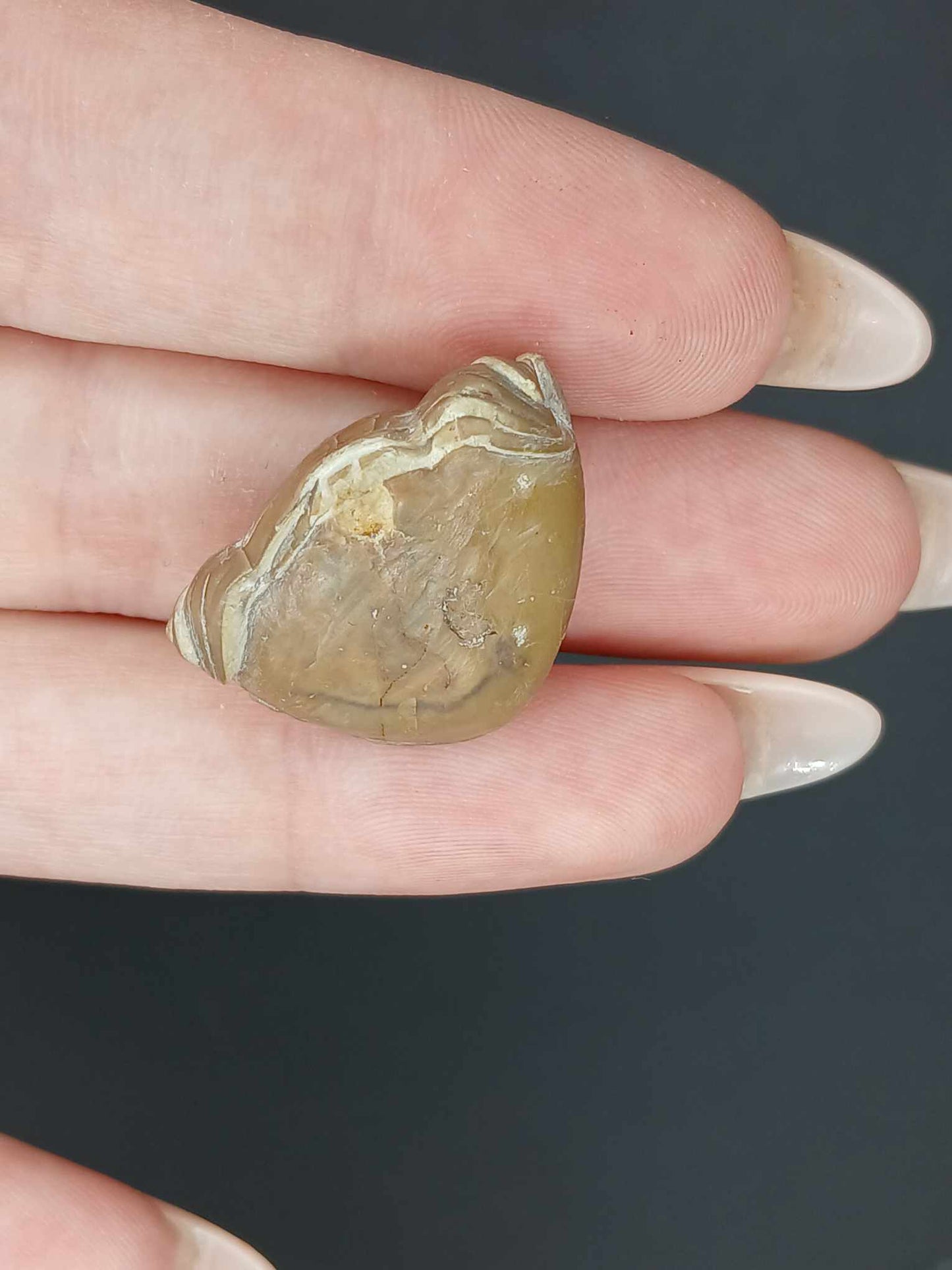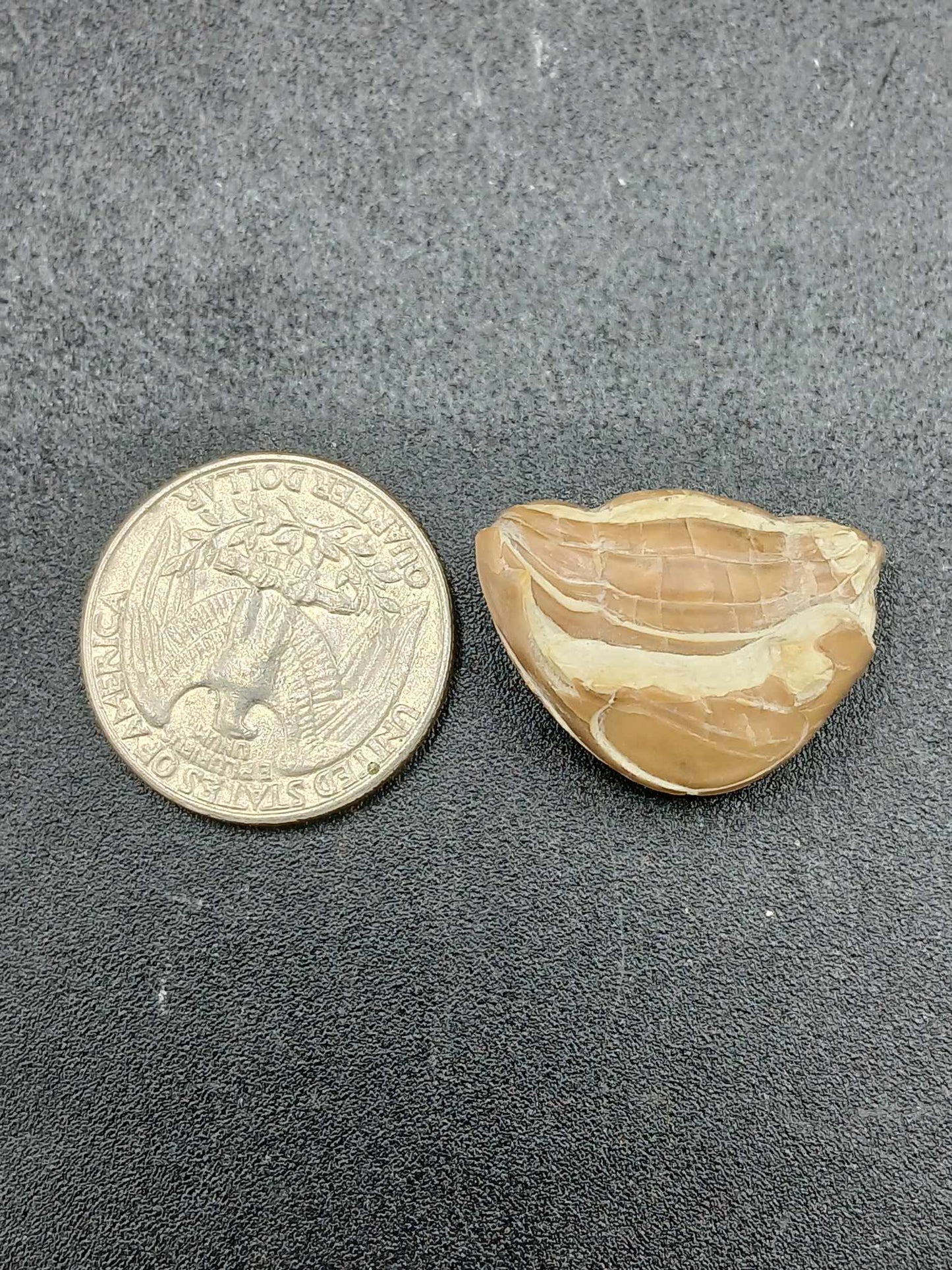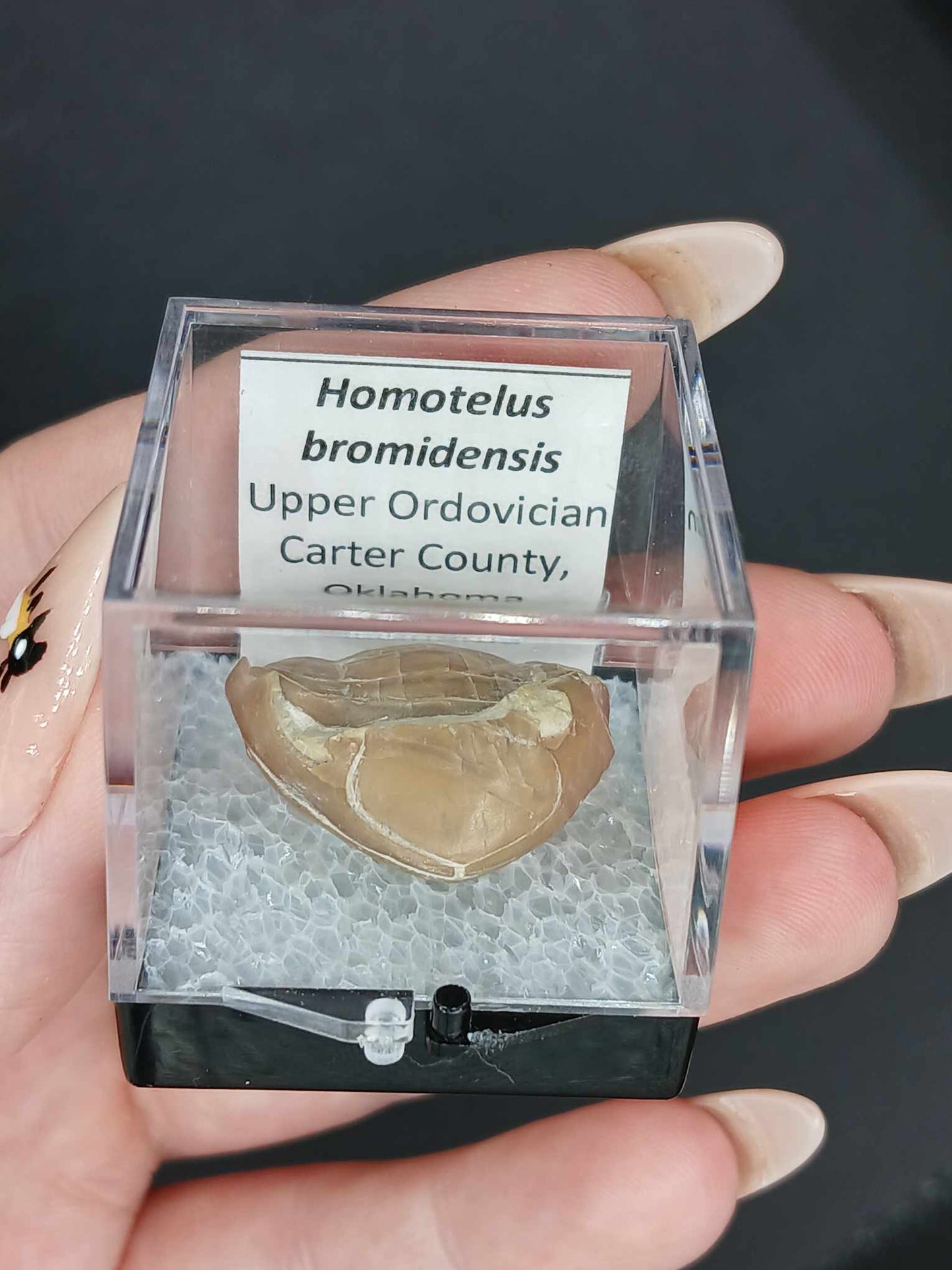Minute Man Fossils
Enrolled Homotelus bromidensis
Enrolled Homotelus bromidensis
Couldn't load pickup availability
Taxa: Homotelus bromidensis
Age: Ordovician-Blackriverian
Geology: Bromide formation
Locality: Carter County, Oklahoma
Homotelus bromidensis
Homotelus bromidensis is a species of trilobite from the genus Homotelus, which existed during the Middle Ordovician period, approximately 470 million years ago. This species is known for its relatively large size and distinct morphology, featuring a well-segmented exoskeleton with prominent axial and pleural lobes. The fossils of Homotelus bromidensis have been found in the Bromide Formation in Oklahoma, USA.
Bromide formation
The Bromide Formation is a geological formation located in Oklahoma, USA, dating back to the Middle Ordovician period, approximately 470 to 458 million years ago. It primarily consists of limestone and shale, indicative of a marine depositional environment. The formation is renowned for its rich fossil content, including brachiopods, trilobites, bryozoans, and other marine invertebrates. Notable among its fossil discoveries is the trilobite species Homotelus bromidensis.
Trilobites
Trilobites are an extinct group of marine arthropods that lived from the Early Cambrian to the end of the Permian period, approximately 521 to 252 million years ago. They are characterized by their three-lobed, three-segmented body structure, consisting of a cephalon (head), thorax (body), and pygidium (tail). Trilobites had a hard exoskeleton, which they periodically molted as they grew. They exhibit a wide range of sizes, shapes, and ecological adaptations, reflecting their diverse habitats in ancient marine environments.
Share







Subscribe to our emails
Be the first to know about new collections and exclusive offers.







